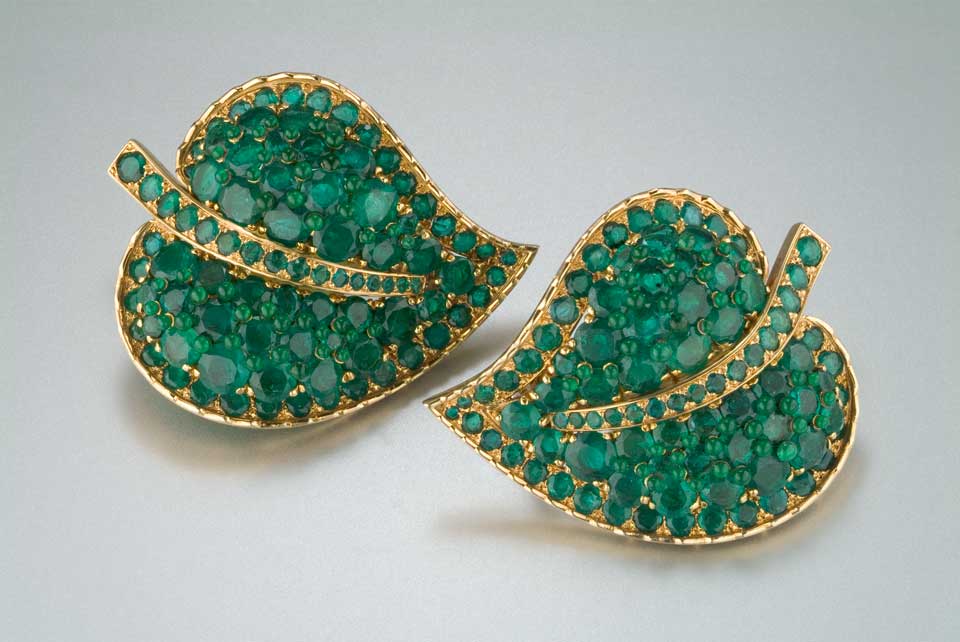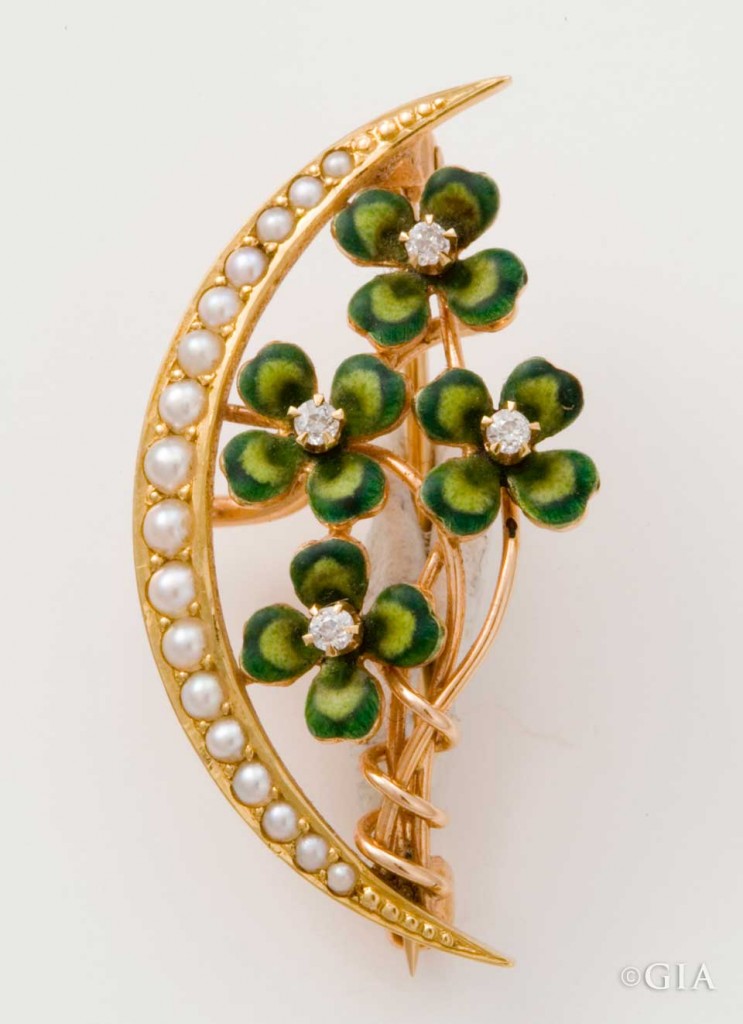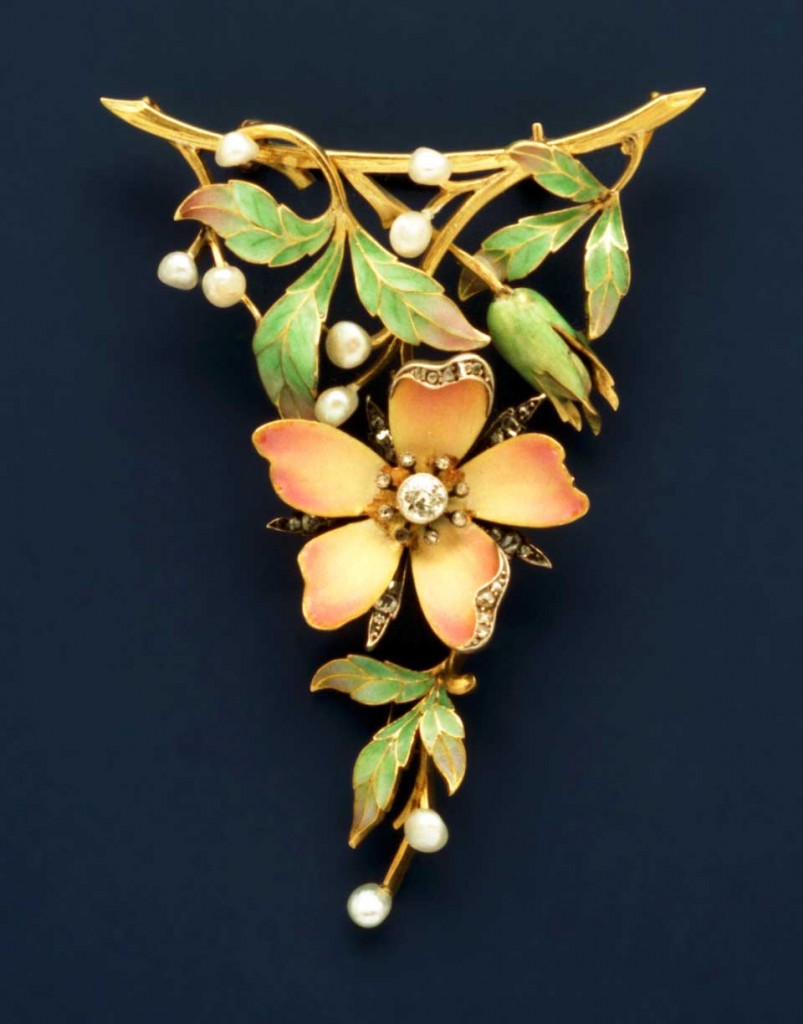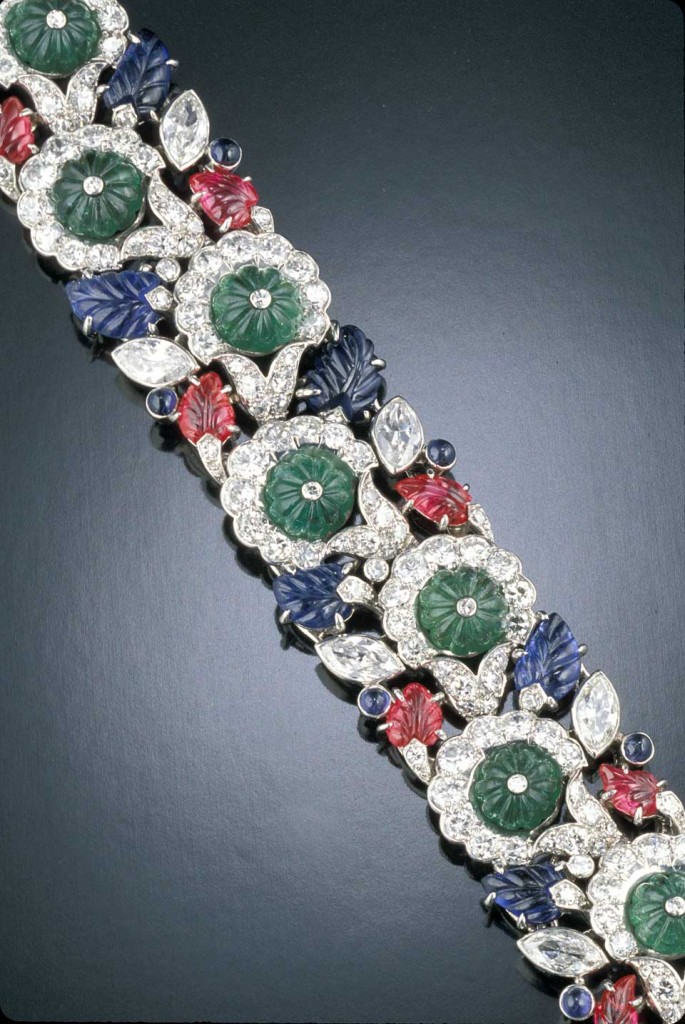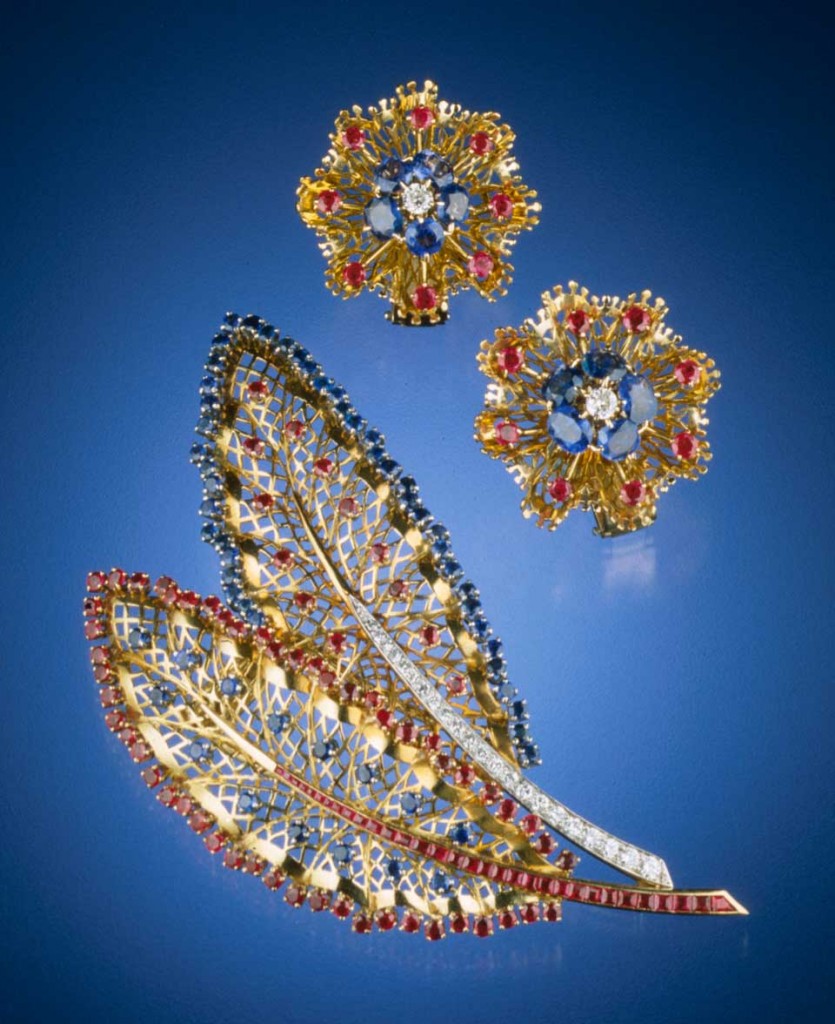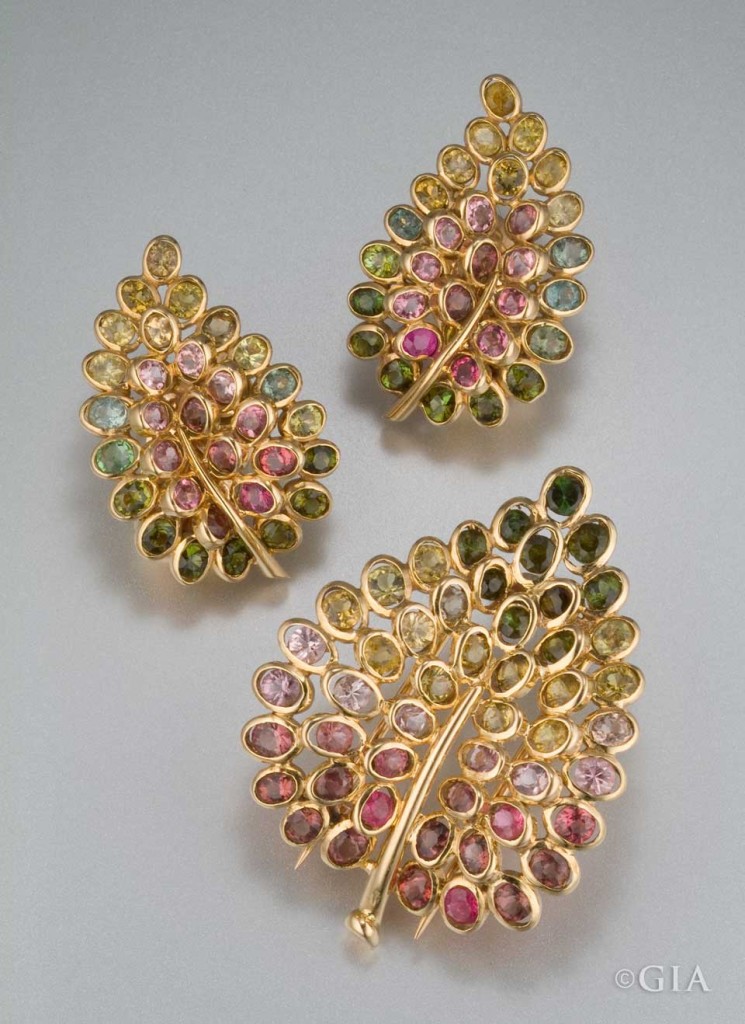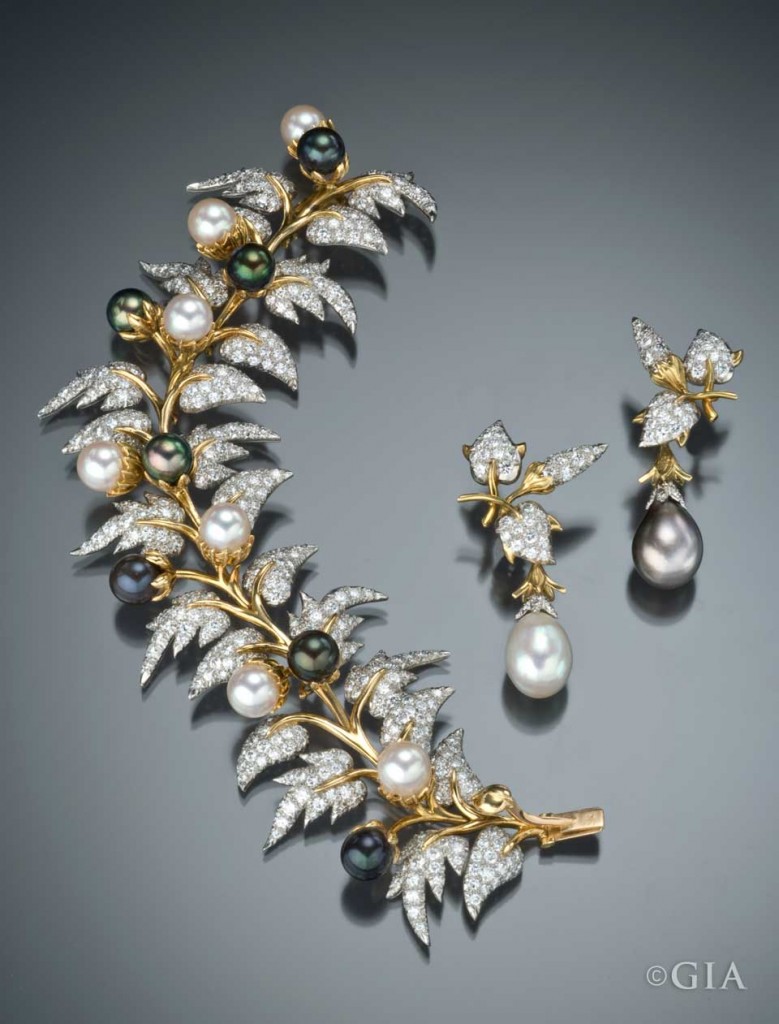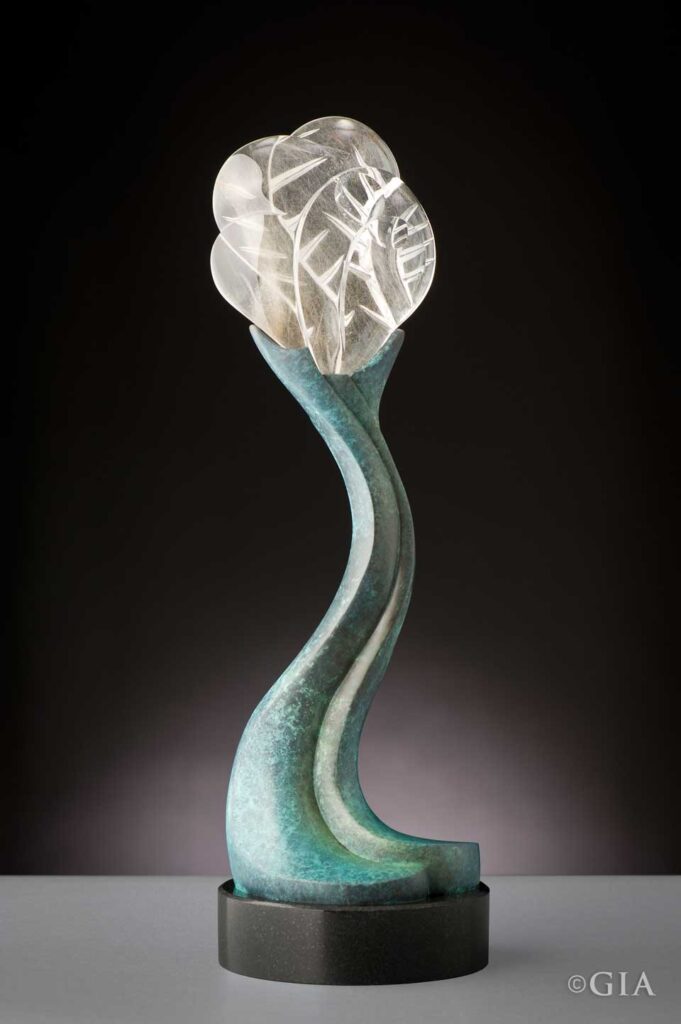Consider the changing beauty of the humble leaf: it is a tender shoot in spring…a lush green canopy in summer…a blaze of reds, yellows, and purples in autumn. Jewelry designers have been captivated by them for centuries, turning Mother Nature’s displays into bejeweled creations.
Let’s take a trip through the decades and see how jewelry designers have incorporated the leaf motif to make wearable works of art.
Victorian (1837 – 1901)
Victorians were enamored with nature, and their love of it can be seen in this brooch. Green enamel gives color to the cloverleaves; tiny diamonds at the center of each leaf adds sparkle.
Art Nouveau (1890s-1910s)
This brooch with its beautifully enameled leaves exemplifies the natural motifs of the Art Nouveau Era. The delicate flower looks like it was plucked from a pre-industrial paradise – a theme that spoke to artists rebelling against the effects of the Industrial Revolution.
Art Deco (1920s – 1930s)
Tutti Frutti (sometimes referred to as fruit salad) was a style popularized by Cartier in the 1920s during the Art Deco period. Cartier saw the spectacular jewels of the Mogul emperors on a trip to India and was inspired by the colorful carved gems. Upon his return to New York, he reimagined them as pieces set with carved rubies, emeralds, and sapphires. This bracelet is by Van Cleef & Arpels.
1940s – 1950s
Van Cleef & Arpels created this double-leaf brooch and pair of earrings in the mid to late 1940s. The top leaf of the brooch has a diamond stem, is sprinkled with rubies, and edged with sapphires. The lower leaf has a ruby stem, sparkles with sapphires, and is bounded by rubies. Its lacy design creates a feeling of openness – like wind blowing through the trees.
The celebrated Parisian jewelry designer Rene Boivin (1864 – 1917) started his firm in the early 1890s. His jewelry house created pieces for the fashion elite of the time: Elsa Schiaparelli, Empress Nam Phoung of Vietnam, Diana Vreeland, and other notables. Pastel-colored gemstones make this brooch and earring set, circa 1950, look like leaves just past their summer peak, touched by the first chill of autumn.
Jean Schlumberger (1907 – 1987), famed for his work with Tiffany & Co., designed this black and white pearl bracelet with matching earrings in the mid-1950s. Stylized leaves were a favorite and often used in Schlumberger’s designs, as were whimsical interpretations of natural forms. The pearls in the bracelet are cultured; the pearls in the earrings are natural.
What better way to capture the lush green of summer leaves than with emeralds? Frame the gemstones with gold, and you have a beautiful design by Cartier.
Late 20th Century – Present
Perry Davis’ sculpture, Ice Tree, is an abstract interpretation of a leaf. Energy and movement are more important than accuracy of details. The base is granite, the stem is bronze and the leaf is carved out of rock crystal quartz from Rio Grande do Sul, Brazil.
This startlingly lifelike leaf is chalcedony. The green area has been dyed. It was carved in Idar-Oberstein, a centuries-old cutting center in Europe.
Leaves undergo a transformation with the changing of the seasons. Thanks to the artistry of talented jewelers, we can enjoy a moment forever captured in time.
Learn more about the fanciful and unusual style of Art Nouveau jewelry and its surprising influences.
Custom Field: Array
